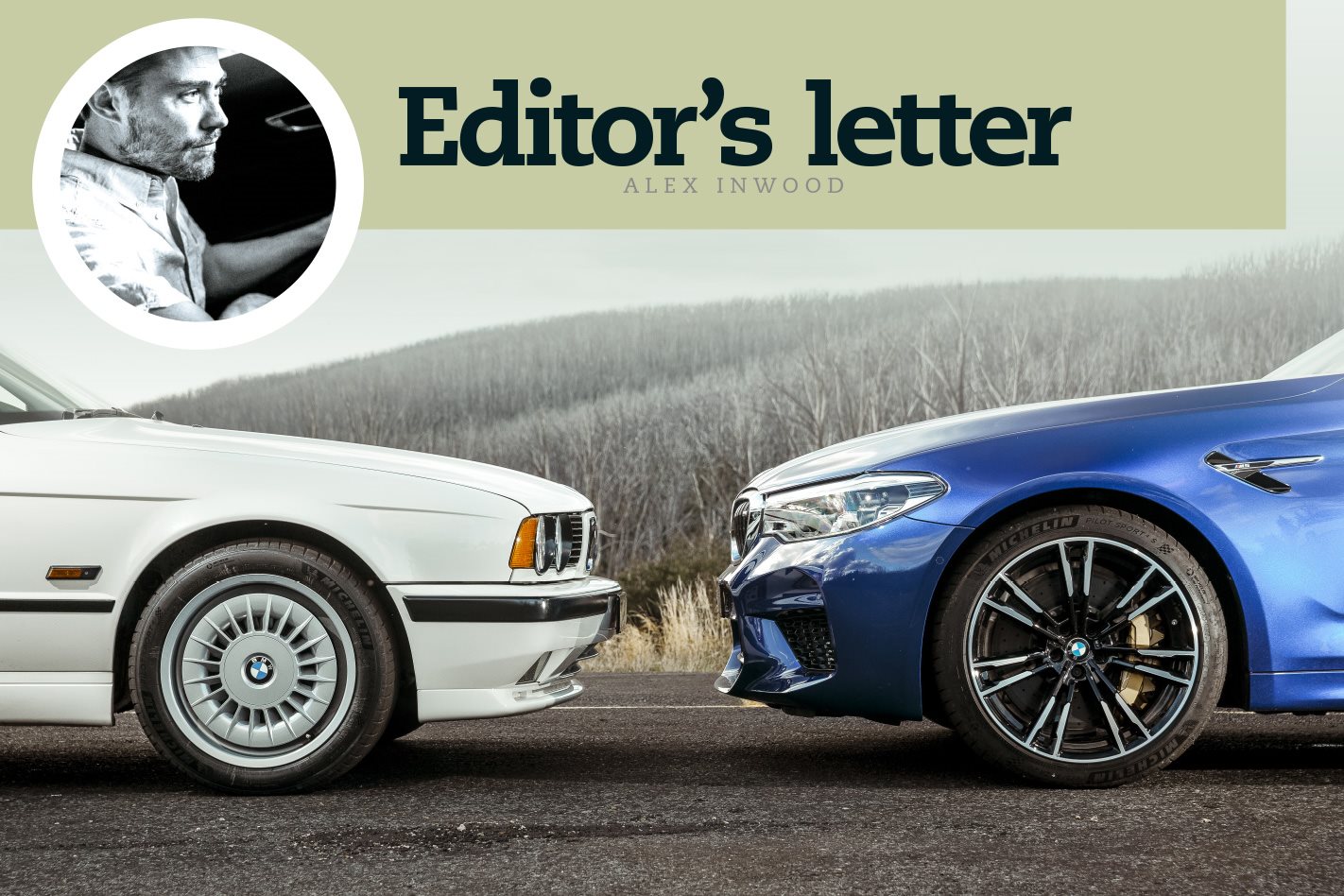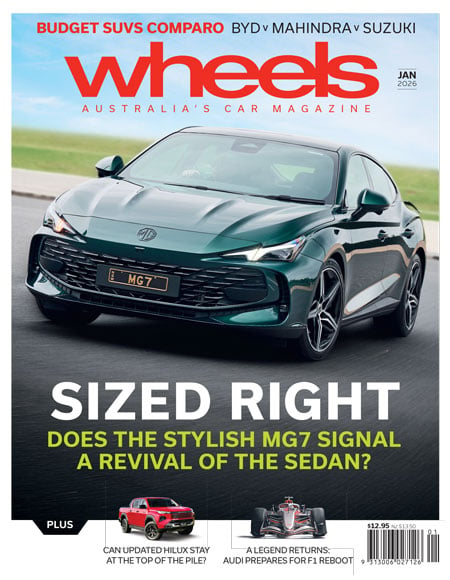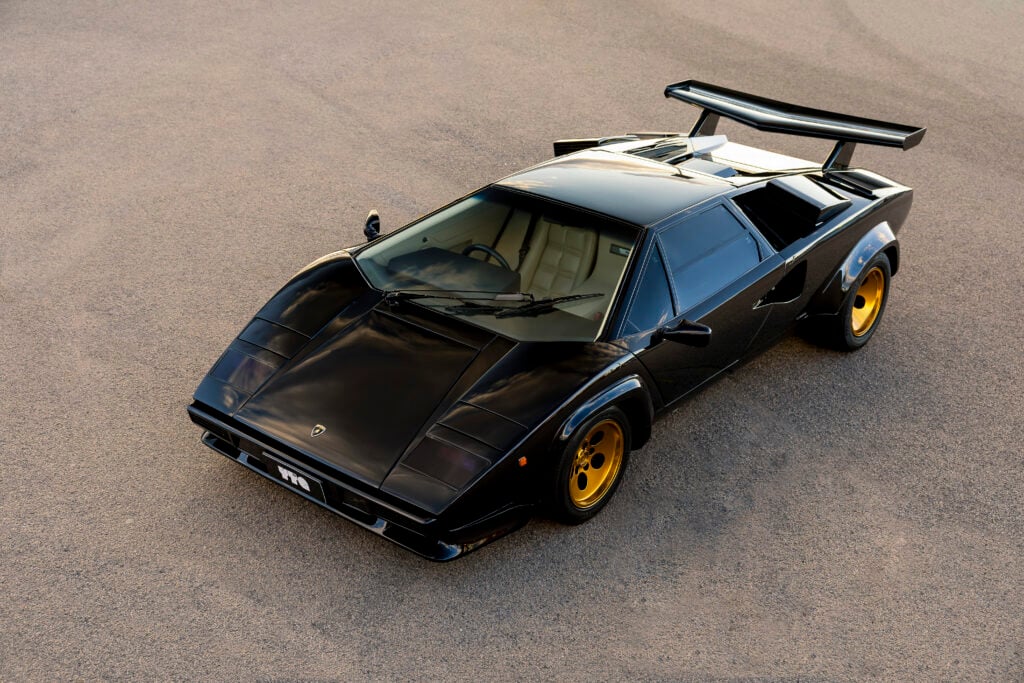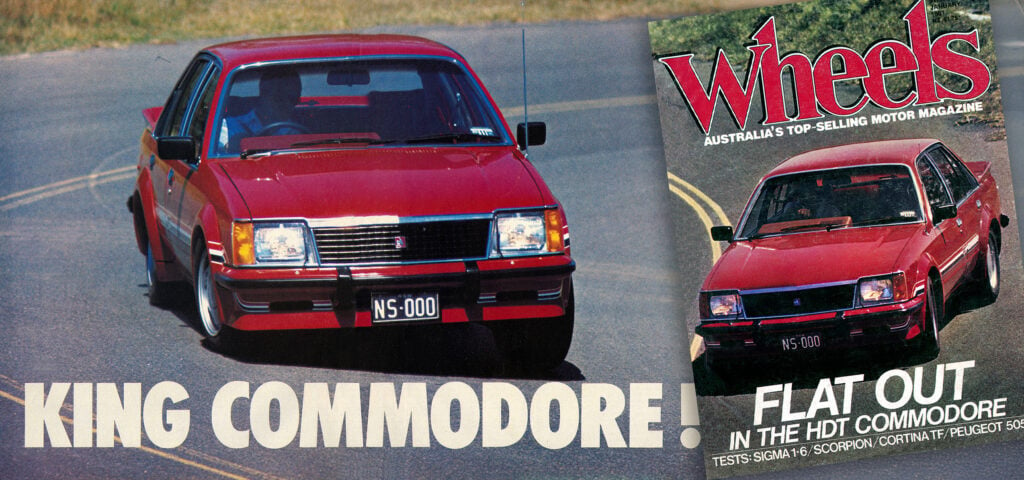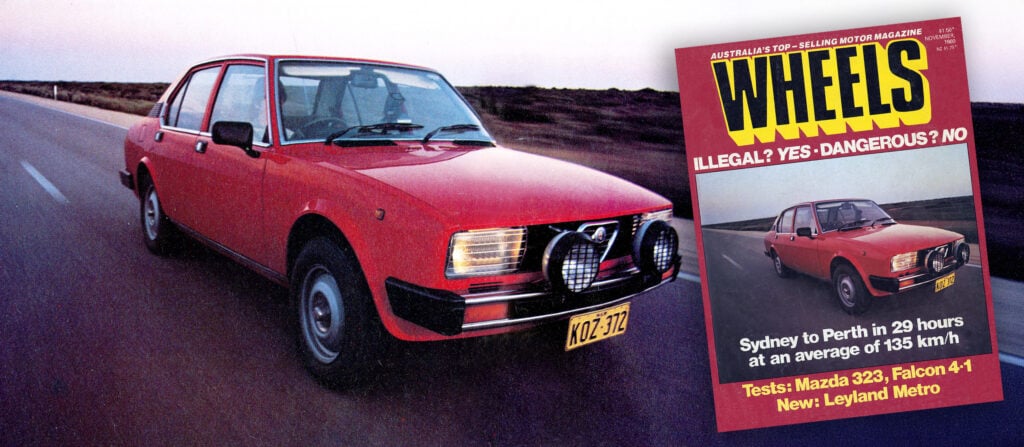The sometimes enlightening, often confronting arrival of perspective is rarely delivered with such cold-faced clarity as when you climb into a car from a bygone era. In many ways they feel like time capsules; machines that preserve the cultural essence of their moment and highlight, unflinchingly, how far modern cars have come.
And so it was driving the E34 BMW M5 that features in April’s issue, on p30. Parked next to the high-tech wizardry, flexed sheet metal and brutish confidence of the box-fresh F90 M5, which is the focus of the piece, the older car felt remarkably simple, unrushed and unassuming. It was almost quaint, with its smaller dimensions, boxy panels and off-set pedals, which isn’t a descriptor I thought I’d use on a car that, not so long ago, was one of the world’s fastest and most engaging sports sedans.
It also caused a quote I’d filed away deep in my brain to bubble to the surface. It was delivered by GM CEO Mary Barra, who proclaimed late last year, “we are in the midst of seeing more change in the next five years than we’ve seen in the last 50.” Other execs and futurists have said similar things and, hyperbole or not, it shines a beam of perspective not only onto the 30-year-old E34, but the F90.
Are we now beginning an age of such rapid progress that cars we consider to be right on the cutting edge, like the weapons-grade F90, will swiftly feel antiquated? A technology boom that could spawn an era of express obsolescence and cause us to look back in five, or even ten years with misty-eyed fondness?
I’m dubious about the predicted timeline, but this is already happening, if at a slightly slower pace and with less severity. Nissan’s R35 GT-R looked, and felt, like a tech-infused spaceship when it landed 10 years ago. Now, Japan’s supercar has gone full circle and feels not so futuristic, but almost outdated and analogue, if still brutally fast.
It makes you pause to ponder what the next wave of enthusiast icons will be like, and where they’ll come from. You only have to look at the sudden appearance and success of the Kia Stinger, and now at the remarkable achievement of our cover car, the Hyundai i30 N (read more on p76), to realise they could hail from the most unlikely of places, or even in unfamiliar shapes with unfamiliar badges.
For all their differences, it’s easy to trace an evolutionary line between the E34 and F90. The family DNA is clear and had you asked someone at the E34’s launch to plot how today’s M5 might look, they wouldn’t have had to guess too wildly. The fact it’s now all-wheel drive, turbocharged and festooned with safety gubbins isn’t such a surprise, but what will the M5 look like in another 30 years? Will it be hybrid? Electric? Autonomous? Will there even be one?
The barriers to such fundamental shifts are slowly and inevitably being knocked down, though how much change this will exert on cars that excite enthusiasts like us remains to be seen. Recent machinery like the Porsche 911 R and the Audi R8 RWS, which we also drive in this issue, show that despite the relentless march of progress, a market still exists for machinery that is pared-back, simpler and focused on the driver. Even if they might soon feel ‘old school’.


